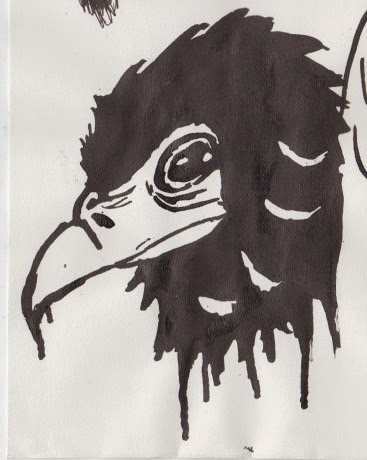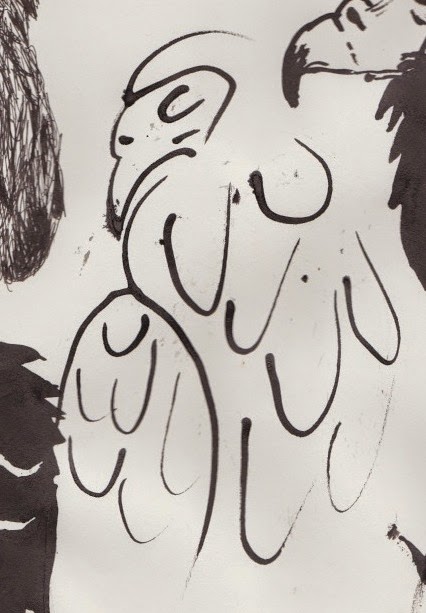Adz Artz Blog
Thursday, 30 April 2015
Wednesday, 4 March 2015
Thursday, 26 February 2015
Sample Annotations
Urban Prints
I have produced a selection of graphics using a screen print style as I am considering using printing as a medium for my final major. I have based them off the theme of urban, and used a simple style using shapes and solid colours. I have made them slightly different by using only straight edges and lines for some designs, others using curved edges and some are more complex than others. Each design has a different subject matter to do with urban environments, therefore I can focus on different aspects of my overall theme.
The subject of this sample is a cityscape. I started off by looking up generic photos of cities and took an overall impression of a skyline. I chose to make the design very simple and only use flat roof buildings. |
Another aspect of urban is transport which is what I have presented here, from the road and the car driving out of the circle to show its moving. Each design has a main colour for this I have chosen red, to reflect the sun setting in the background. |
Friday, 20 February 2015
Thursday, 18 December 2014
Long And Thins
These are my long and thin samples which I presented onto A2 paper. I used a mixture of techniques and materials to produce these pieces.
Collage:
I started off by gathering materials for my surface, I wanted to incorporate a lot of text into the piece therefore I used newspapers and magazines. I tried to avoid applying PVA onto of the paper as it would have a shiny finish and resist the coffee and ink. The paper added a rough jagged surface texture, which I really like and adds to the authentic look. Next I harshly painted coffee over the entire page and let that dry. Next I drew out the building in pencil and then went over that with ink. To add highlights I used white emulsion and lightly applied it over the lighter edges. After I go to this stage and looked back at it, I thought it looked a bit boring. So I added some purple and yellow touches using fine liners. I am happy with the way this turned out however if I would change anything, I would use less wet medias and add more finer detail.
Stick and Ink:
This was the simplest and most easy piece to create as it used the least amount of medias and had the simplest composition. The original image was of an old cherub statue which had been slightly decayed from age. The thing I struggled with the most was getting the broken and rotting parts of the image as it had a complex rough texture to it. I first applied coffee again to the entire canvas. Then I used the stick and ink technique to draw out and add the dark areas of the image. Next I added in the mid tones using stronger coffee. At this point the image was starting to come together and look like something. To add highlights I used emulsion and lightly applied it to the lighter areas. Finally to add detail I used black fine liner and white gel pens, to get add in those intricate highlights and shadows.
This is my favourite of the three samples because I really like the mark making and use of tone.
Quink and Bleach
Out of the 3 this was the hardest piece to do as I hadn't used the quink and bleach technique much, and I had chosen a particularly challenging photo. The image was of a wall carving of a ship steering wheel, which had aged and started to build decay. There were a lot of complex textures and debris on the subject,which was hard to capture in my sample. I started off by applying ink to the page and letting it dry over 4 days. I then added bleach to draw out the dark areas creating a negative / inverted effect. Next was to add the highlights using emulsion. I used scrapped it onto the page so it would look rough and have a lot of texture which was present on the original picture, helping to convey the decaying elements on the wall. At this stage it looked like a bunch of patches of white and yellow. I needed to show an indication to what the image was of. To do this I used gold pen to outline it, and added in a few intricate curvy patterns to contrast with the messiness and look more interesting. I was not too pleased with the final outcome, however I do think it works well with the other two when all presented together.
One key feature to all of these studies is texture. I think this helps to show what the subject matter is as it shows the old, rotting, grittiness of the architectural detail. It also allows the viewer to not only look at the work but also feel it, therefore making it interactive and more effective.
Thursday, 4 December 2014
Lawson Gallery Visit - Cambridge

I had chosen to visit The Lawson Gallery in Cambridge. I chose this gallery because I have been passion gofer many years when visiting Cambridge, but never actually going in and seeing the work. I would sometimes look through the window and see work which I really like the look of. Once we where told to do this project I initially wanted to go to an exhibition in London. However I could not find an appropriate day to go there and some where hard to find. I then decided to go somewhere more local which lead me to
The Lawson Gallery. I then looked up the gallery online and found 2 artists who I would like to explore (Ed Robinson, Karen Pittaway). I found that the artwork was very well executed and would contribute well to what I am currently doing in my art. I chose these artist because they all include the aspect of urban, to do with a city environment (Architecture).
Ed Robinson
I found the work of Ed Robinson to be the most relevant to my work as it includes urban environments and mixed media techniques, which is what I'm experimenting in at the moment.
The painting is of the National Gallery in London on a rainy day. From close observation I found that he used: newspapers, magazines and oil paints. This added a large amount of texture to the piece. The piece had a shiny finish which suggests that he used PVA glue to stick on the paper. The shininess helped convey the fact that in the picture it is raining, as it showed reflections from the light. He also used more newspaper on he buildings closer to the foreground. This helped
to add to the perspective of the piece and created a literal sense of depth from the texture.
The piece is not incredibly refined however there is actually a lot of detail from the: subject matter, composition and amount of things going on in the painting. I really like this piece as it is very interesting to look at and draws the viewer in.
Karen Pittaway
This piece is an oil painting of Kings Parade in Cambridge. It looks like a busy clear skies day set in modern day. The artist has included a lot of high contrast and detail however it is done in a simplistic style, which is similar to Lour-e. There is no surface texture, therefore the oil paints have been very thinly applied yet still maintains bold colours. My favourite part of the painting is the way she has created perspective and made it look like its a living world and the painting seems a if its alive.
Monday, 24 November 2014
Raptor Rapture Foundation - Drawing From Observation
On 6th November we had the Raptor Rapture foundation come in to our classroom, where they brought in 6 of their birds for us to draw. Once everything was set up we where put on our separate tables and placed in our groups. After everyone was seated the birds where brought in and placed on stands on each table. These birds included: Eagle Owl, Bateleur Eagle, White Face Scops Owl, Tawny Owl, Harris Hawk and a Falcon.
On each table there were different materials we could use to draw the birds such as: stick and ink, charcoal, graphite, fine liner, felt tip, pencil, emulsion etc… My favourite materials to use where the stick and ink because I like the smooth elegant lines you ca get, and the way you can make the lines and marks thick and thin. I also liked using the fine liner and onto brown paper which I used to draw the White Face Scops Owl. I like this technique because I used the black fine liner for shadows and drawing out the bird, then I used my white gel pen for highlights. This then made the brown paper act as the mid tone, which worked nicely.
Once we had 30 minutes to draw the bird we then had to move tables, to draw the other birds. I liked drawing all the birds, but my favourite was the Bateleur Eagle because it had the most interesting features and looked magnificent.
I thoroughly enjoyed this once in a lifetime experience and would love to do it again sometime, it was extremely beneficial and helped me produce some good drawings.
Once we had 30 minutes to draw the bird we then had to move tables, to draw the other birds. I liked drawing all the birds, but my favourite was the Bateleur Eagle because it had the most interesting features and looked magnificent.
I thoroughly enjoyed this once in a lifetime experience and would love to do it again sometime, it was extremely beneficial and helped me produce some good drawings.
Subscribe to:
Comments (Atom)












